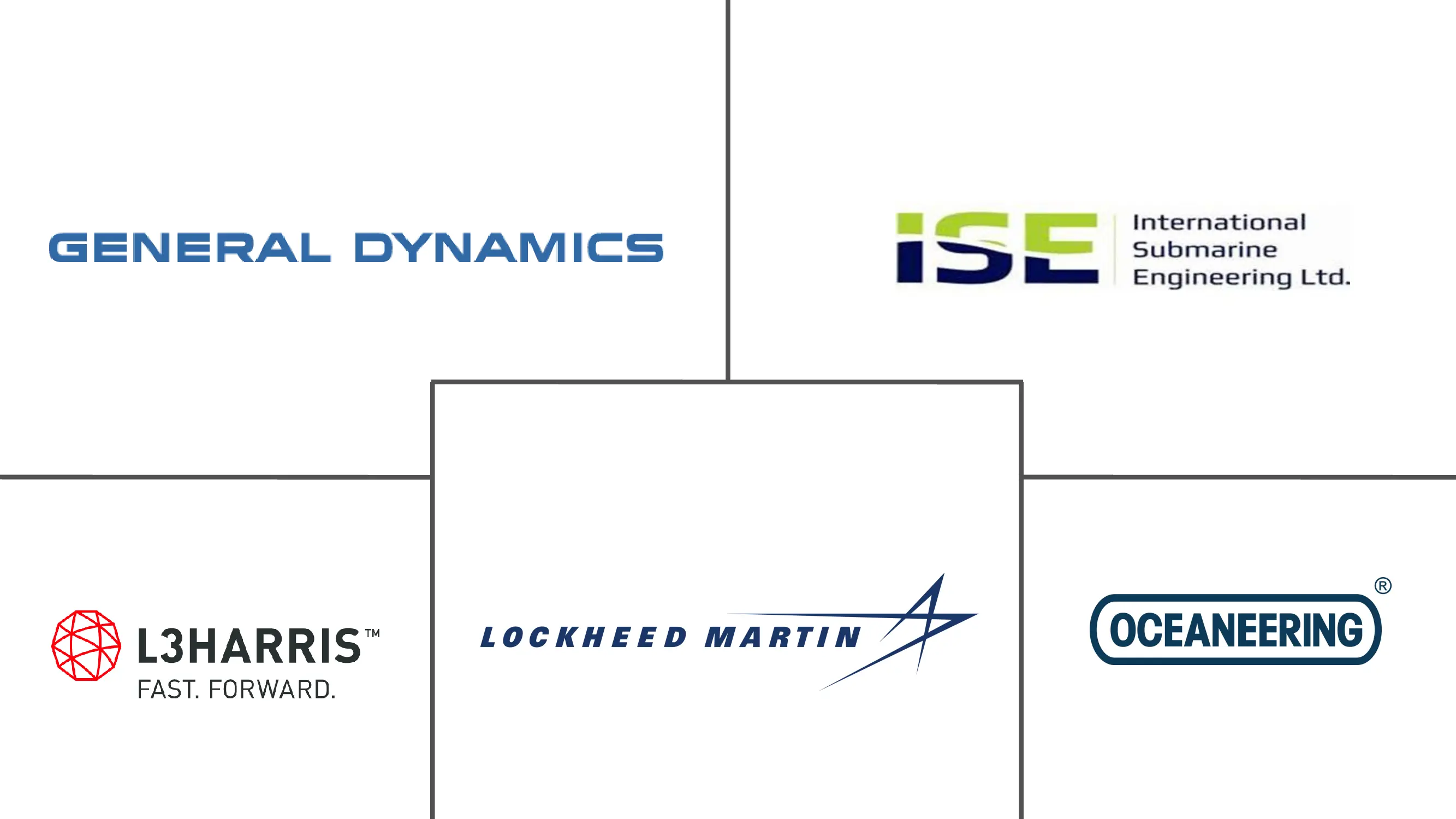Market Size of North America AUV Industry

| Study Period | 2020 - 2029 |
| Base Year For Estimation | 2023 |
| Forecast Data Period | 2024 - 2029 |
| Historical Data Period | 2020 - 2022 |
| CAGR | > 7.00 % |
| Market Concentration | Medium |
Major Players
*Disclaimer: Major Players sorted in no particular order |
North America AUV Market Analysis
The North American AUV market is projected to register a CAGR of over 7% during the forecast period. The market was negatively impacted by COVID-19 in 2020. Presently, the market has reached pre-pandemic levels.
Over the medium term, factors such as the increase in oil and gas exploration and increasing deep-water offshore oil and gas production in the region are expected to drive the growth of the market studied. On the other hand, increasing awareness about climate change and decreasing dependency on oil and gas in the future is expected to restrain the growth of the North American AUV market.
Nevertheless, by integrating artificial intelligence, unmanned vehicles can conduct long-range attacks, surveillance operations, and minefields in real-time communication, undersea strikes, autonomous navigation, and surveys. Several companies are developing autonomous vehicles with excellent long-range endurance, intelligence, surveillance, and minefield capabilities. These factors are expected to provide growth opportunities in the market studied.
The United States dominates the market. It is also expected to witness the highest CAGR during the forecast period. The growth is mainly driven by the increased procurement of advanced AUVs from the US Navy for ISR operations, search and rescue, and other missions.
North America AUV Industry Segmentation
An automated underwater vehicle (AUV) is a self-propelled, unmanned underwater vehicle capable of carrying out simple activities with little or no human supervision. AUVs are robotic vehicles that are pre-programmed with operation parameters and then deployed into the ocean or seafloor. An AUV operates individually without any cable connections. AUVs have several underwater applications. They can be used for commercial or industrial applications, such as exploring oil and gas or locating ship and plane wrecks; military applications, such as inspection or anti-submarine warfare; and research applications, such as ocean mapping or measuring the physical properties of the water column.
The North American AUV market is segmented by application and geography. By application, the market is segmented into oil and gas, defense, commercial exploration, and other applications. The report also covers the market size and forecasts for the AUV market across major countries such as the United States, Canada, and the Rest of North America. For each segment, the market sizing and forecasts are provided in terms of value in USD billion.
| Application | |
| Oil and Gas | |
| Defense | |
| Commercial Exploration | |
| Other Applications |
| Geography | |
| United States | |
| Canada | |
| Rest of North America |
North America AUV Market Size Summary
The North American AUV market is experiencing a resurgence, having recovered to pre-pandemic levels after the initial setbacks caused by COVID-19. The market is poised for significant growth, driven by the increasing demand for oil and gas exploration and production, particularly in deep-water offshore areas. The integration of advanced technologies such as artificial intelligence into autonomous underwater vehicles is enhancing their capabilities, making them indispensable for tasks like surveillance, navigation, and undersea operations. Despite the potential challenges posed by a shift towards renewable energy sources and climate change awareness, the market is buoyed by the ongoing need for efficient inspection and maintenance of subsea structures, which AUVs are uniquely equipped to handle. The United States, in particular, is leading the market, with substantial investments in advanced AUVs for military and commercial applications.
The market landscape is characterized by a diverse range of players, including major companies like General Dynamics Corporation, L3Harris Technologies, and Lockheed Martin Corporation, among others. These companies are actively developing and deploying AUVs for various applications, from oil and gas exploration to military operations. The United States Navy's focus on enhancing its undersea capabilities with AUVs, such as the Orca Extra Large Unmanned Undersea Vehicle, underscores the growing importance of these technologies in defense strategies. Additionally, the increasing number of offshore oil and gas production facilities and the rising investments in deepwater activities are expected to further drive the demand for AUVs in the region. As the market continues to evolve, innovations and strategic partnerships are likely to play a crucial role in shaping its future trajectory.
North America AUV Market Size - Table of Contents
-
1. MARKET OVERVIEW
-
1.1 Introduction
-
1.2 Market Size and Demand Forecast in USD billion, till 2027
-
1.3 Recent Trends and Developments
-
1.4 Government Policies and Regulations
-
1.5 Market Dynamics
-
1.5.1 Drivers
-
1.5.2 Restraints
-
-
1.6 Supply Chain Analysis
-
1.7 Porter's Five Forces Analysis
-
1.7.1 Bargaining Power of Suppliers
-
1.7.2 Bargaining Power of Consumers
-
1.7.3 Threat of New Entrants
-
1.7.4 Threat of Substitutes Products and Services
-
1.7.5 Intensity of Competitive Rivalry
-
-
-
2. MARKET SEGMENTATION
-
2.1 Application
-
2.1.1 Oil and Gas
-
2.1.2 Defense
-
2.1.3 Commercial Exploration
-
2.1.4 Other Applications
-
-
2.2 Geography
-
2.2.1 United States
-
2.2.2 Canada
-
2.2.3 Rest of North America
-
-
North America AUV Market Size FAQs
What is the current North America AUV Market size?
The North America AUV Market is projected to register a CAGR of greater than 7% during the forecast period (2024-2029)
Who are the key players in North America AUV Market?
General Dynamics Corporation, International Submarine Engineering Ltd, L3Harris Technologies, Lockheed Martin Corporation and Oceaneering International, Inc. are the major companies operating in the North America AUV Market.

